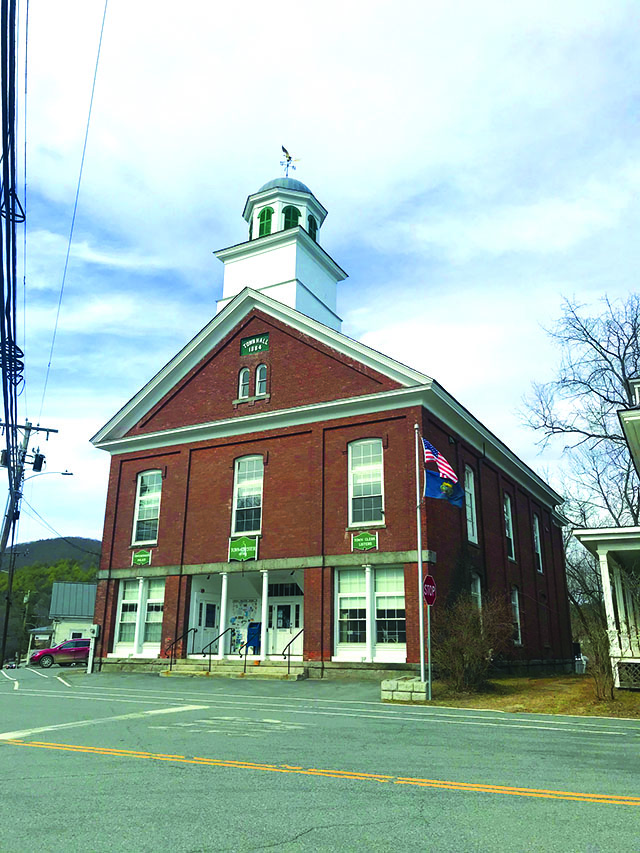
CHESTER, Vt. – The majority of the Wednesday, Sept. 18, Chester Selectboard meeting was taken up by a hearing on proposed updates to Chester’s Unified Development Bylaws, the “last phase of a two-year task,” as Chair Arne Jonynas put it, to update and modernize the town’s zoning bylaws. Chester has already held hearings on proposed bylaws for its most densely populated zones, including all of the village, and this hearing was focused specifically on Chester’s rural districts.
Planning Commission Chair Hugh Quinn was on hand to explain the proposed changes to the bylaws, telling the board that the objectives for these changes were to “create less density as you move away from the village center,” as well as to create corridors for wildlife movement, and allow landowners to “maximize the land they have…from a development point of view.”
To that end, Quinn explained that the proposed changes would eliminate minimum lot sizes in Chester’s rural zones, instead opting for density-based zoning. This would mean that, instead of requiring a certain amount of acreage per lot, these zones would now only limit the number of units per acre of land within the zone, with no minimum lot size. Specifically, the current R120 district, which has a three-acre minimum lot size, would be changed to allow one building per five acres of land and renamed RUR-5, and the current C-R district, which has a minimum five-acre lot size, would change to allow one unit per 10 acres and be renamed RUR-10. This would, Quinn said, reduce the overall density of these areas, but allow buildings on easily developed parcels of land to be built in more locally dense clusters, rather than dividing said parcels into minimum lots, which limits their capacity for development.
“If we went to density-based [zoning], we could actually meet the state goal of less density, but still give landowners the flexibility to get a reasonable return on their land,” town planning and zoning administrator Preston Bristow added.
Several Chester residents voiced concerns with the proposal, including Derek Suursoo, who felt that the lack of minimum lot size opened the door for undesirable types of development. “I could see where you have 200 acres, 20 houses, very tight spacing, is that really where we want to go?” Suursoo questioned the board. Quinn responded that developments would still need to meet minimum frontage, setback, and septic requirements, and that this would likely be a limiting factor in terms of how densely developed a parcel could be. After some discussion, Quinn and the board believed that the theoretical minimum lot size with all frontage and septic requirements met was somewhere around two acres, though all conceded that in certain circumstances, the minimums could potentially be met on a smaller lot.
Resident Amy Mosher read from a letter she had submitted to the board, explaining that she would like to see setbacks maintained at their current level in the rural districts. Mosher felt that “by taking away the minimum lot size in the RUR-5 and the RUR-10, the town would be inviting suburban development into these sensitive rural areas.”
Jason Rasmussen of the Mount Ascutney Regional Commission, who has been working with Chester’s planning commission on the bylaw updates, responded to these concerns, stating that the overall density of these zones is being reduced by the proposal. He used the example of the current R120, which at present allows one six-acre lot to be split into two three-acre lots. The proposed bylaws would change this, meaning that in this same zone, a minimum of 10 acres would now be required for two buildable lots of any size.
Due to the concerns voiced, however, the board recessed the hearing for a future meeting, asking Quinn and the planning commission to consider adding minimum lot size requirements to the new zones as an added layer of security against overly dense localized development.
The Chester Selectboard will next meet on Oct. 16, at 6:30 p.m., on the first floor of the Chester Town Hall.